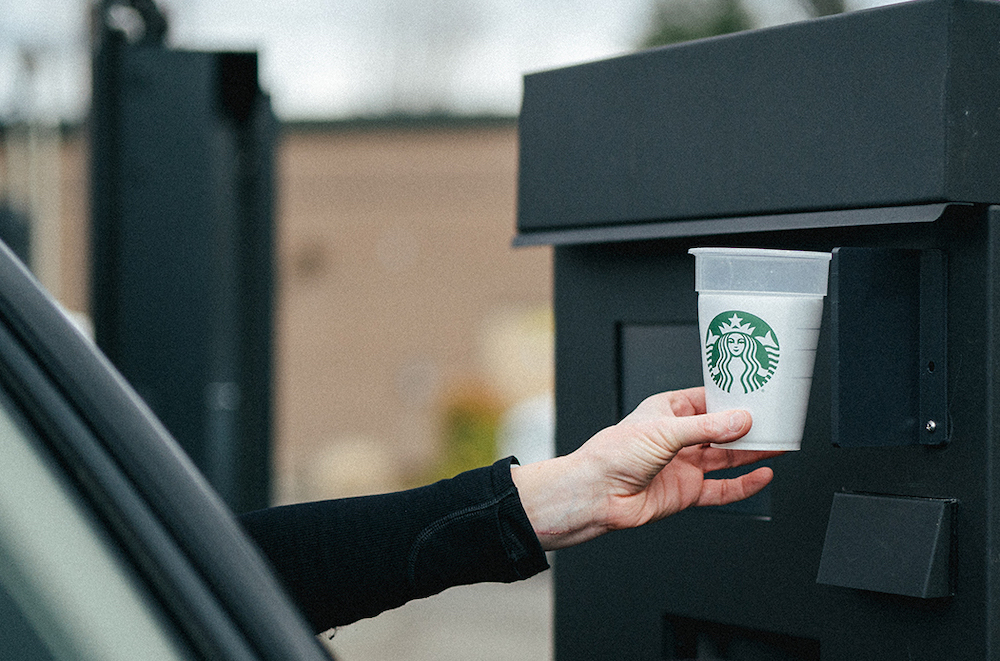Two Years Later, COVID-19 Has Reshaped the Built Environment


A street transformed to an outdoor dining space in San Mateo, California
Since February 2020, the COVID-19 pandemic has certainly changed many aspects of daily life. As cities implemented pandemic-resilient strategies, the result has been a shift in how many residents interact and conduct their daily routines within the built environment. As the pandemic continued, cities have changed the way residents use the streets, transport themselves, dine in restaurants and attend festivals. So far, the evidence suggests that many of these changes will likely stay permanent.
The great move outdoors
Many towns shied away from having large indoor events, with many of those events moved outdoors if they weren’t canceled outright. Music festivals, graduation ceremonies, and even private parties were often moved to parks and other open spaces, as organizers favored venues with opens spaces that could help mitigate any spread of COVID-19.
With permission from local governments, numerous restaurants augmented their outdoor dining options. Sometimes, this shift entailed closing down streets or removing parking spots to free up space. In addition, some restaurants invested in heat lamps, outdoor furniture and tents to extend the outdoor dining season.
Cities redefined the dining experience during COVID-19
New York is one example of how cities and towns transformed public spaces. The city has given up 8,550 publicly-owned curbside parking spots since the pandemic started, according to local data. And, former New York Mayor de Blasio declared the program will be permanent. This move shows agility in the face of a challenge and helped numerous restaurants stay in business during the pandemic.
In a recent interview with the New York Post, Andrew Rigie, head of the Hospitality Alliance, which represents many city restaurants and bars, said, “Outdoor dining has transformed New York City’s streetscape for the better and has been a critical lifeline for thousands of small businesses and jobs throughout the five boroughs during the COVID-19 pandemic.”
Rigie added, “[This] announcement to make outdoor dining permanent, to allow the use of heat lamps to keep customers warm outside during the cooler months, and to allow restaurants to utilize adjacent space where feasible so they can accommodate more guests and generate much-needed revenue is a major step to rebuilding a stronger, more resilient and livable city.”
Boosting restaurant revenues also means more income for the city via taxes, not to mention more dining options for locals. But not everyone welcomed these trends. Converting parking spots to outdoor dining has been opposed by some New York residents. On the other hand, making it more difficult to park in congested cities is a welcome change for people who feel more encouraged to walk or bike within their neighborhoods.
Access on city streets for automobiles has been further limited in cities from Washington, D.C. to Seattle. On that point, New York City has maintained its Open Street program, which gives priority to pedestrians and bikers on certain roads. In other areas, curb extensions limit parking and car access, freeing up more open space.
Other long-term affects COVID-19 had on communities
The expansion of life outdoors is more than about restaurants and cafes.
In addition, many schools, camps, and daycare facilities moved their programs partially or fully outdoors. Some schools in Maine obtained grants to build durable gazebo-style outdoor classrooms that could last for decades. Many students and parents have been supportive of the move towards the outdoors for reasons aside from COVID-19.
Numerous studies show that students learn better outdoors, so this approach could be beneficial for student achievement. It is especially important for children with ADHD to spend time in nature to boost their ability to concentrate and reduce stress.
The benefits on adults are undeniable as well. For example, Vitamin D is critical for a healthy immune system and we can get a daily dose from exposing our skin to sunlight.
The pandemic has also caused gardening to rapidly gain popularity, as many stores sold out of such supplies. The demand for seeds skyrocketed, with Johny’s Selected Seeds noticing a 270 percent increase in their typical spring sales in 2020.
Beyond dining: Will these changes in our towns and cities last?
Not everyone could afford to eat outdoors at restaurants or have such food delivered. Local food shortages and other factors driving food insecurity encouraged citizens to become more self-reliant. Disruptions in the food supply chain left some empty grocery store shelves and long lines at food pantries. For families without access to ample garden space, community garden plots has enabled many to nurture their green thumbs.
Some pandemic trends will leave a positive environmental impact. For example, ridership on public transportation plummeted in early 2020 in many cities and has since only rebounded in some metropolitan areas. Reduced demand and the decrease in revenues that such systems generate could result in long-term reductions in service, further hindering ridership. Increased demand for new and used cars also raises concerns about the long-term viability of public transport networks across the U.S.
The unprecedented changes resulting from the pandemic created opportunities for urban planners to change how things to build more resilient cities for the long term. While an increase in outdoor dining and education, bike lanes and gardening show promise for more sustainable cities, such open street programs were not necessarily equitable. But as many citizens seek a return to the pre-pandemic days, local leaders from San Jose to Miami now feel pressure to re-open certain streets to cars once again.
Co-written with Leon Kaye
Image credit: Albert Hu via Unsplash
10+ Brands That Embraced the Circular Economy in 2021


Nope, these stock sachets aren't plastic — they're dissolvable and made from pea protein.
Pledges to use more recycled materials are increasingly falling short as the public grows more concerned about the global waste problem and people seek out solutions to lighten their footprints. While many of those solutions still need to scale, a growing number of brands are looking to pave the way toward a circular economy in which nothing becomes waste. From reusable and dissolvable packaging to giving secondhand goods a new life, read on for some of the top circular economy solutions that caught our eyes in 2021.

Tim Hortons tests reusable packaging with help from Loop and Tupperware
Tim Hortons gave reusable a try in 2021 with help from the container masters at Tupperware and the reusable packaging platform Loop. In November, the Canadian fast-food giant began testing a reusable packaging option designed by Tupperware at select locations around Toronto.
Guests pay a $3 deposit for the packaging, which is refunded when they return it. “Through this test we’ll start learning how guests respond to a reusables and returnable packaging system — what they like or don’t like — with the aim of refining a system that is seamless and enjoyable for more guests in more cities in the future,” Paul Yang, senior director of sustainability and packaging for Tim Hortons, said in a statement.
Tim Hortons is among a number of brands testing the water with reusables in partnership with the Loop platform. This circular economy pilot is also a first for Tupperware, which linked up with Loop back in 2020 to provide insight and expertise on reusables. Additional reusable package options created by Tupperware will be available to more of Loop's brand partners in 2022, the company says.

McDonald's and Starbucks trial reusable cup programs
McDonald's trialed a reusable cup program in the U.K. last summer, also in partnership with Loop. Customers at six restaurants could order their morning cuppa in a reusable mug for a deposit of one British pound, which they got back when they returned the cup, along with a discount on their next order.
Meanwhile, after two single-store tests in 2020, Starbucks expanded its Borrow A Cup program to five stores in Seattle from March through May of 2021, in partnership with a Seattle-area service called Ridwell. Like the McDonald's program, Starbucks customers simply pay a $1 deposit to order with a reusable cup, and they'll receive points for refunds through the chain's rewards program when they bring it back.
Both companies say they're looking to learn from the pilots as they seek to expand reuse programs to more locations in pursuit of a more circular economy for their products and packaging.

Ikea scales furniture buyback and resale program across the U.S.
Ikea's large-scale furniture buyback program was a smash hit when it launched in 27 countries in 2020, including Germany, Australia, Canada and Japan. In 2021, U.S. consumers got their chance to take part.
After piloting the program in Conshohocken, Pennsylvania, where the company says 100 percent of the items brought in were resold, Ikea rolled it out to all of its U.S. retail stores in November of last year. Mirroring the global program, U.S. customers can get store credit for their gently used, unmodified Ikea furniture that is resold in the stores' as-is section.

Ulta brings reusable beauty packaging to the masses
With more than 1,200 U.S. stores and over 30 million loyalty members, Ulta Beauty is one of the top mainstream retailers for cosmetics, skincare and haircare products. And in 2021, Ulta shoppers got a chance to try some of their favorites in reusable packaging, thanks to the retailer's partnership with (you guessed it) Loop.
Starting in March, the Loop x Ulta Beauty online store was regularly updated with new products, with participating brands including Burt's Bees, Mad Hippie, Melanin Essentials and Oneka. Customers from all 48 contiguous U.S. states could have their choices delivered in reusable packaging and send them back to be refilled.
The pilot wrapped at the end of November with no official word on the next step, but Ulta remains listed as a partner on Loop's website, so we'll likely see more from these two in the year ahead.

Leading U.K. meal kit company unveils dissolvable film made from pea protein
Perhaps even better than giving waste a second life, a big part of the circular economy of the future will be innovating to eliminate unnecessary waste altogether. This clever innovation from B Corp meal kit company Gousto is a case in point.
Billed as the "world’s first edible stock sachet," this innovative design co-created with the sustainable packaging experts at Xampla offers an alternative to those plastic packets around vegetable bouillon cubes. Rather than deal with wasteful and hard-to-open sachets (hello, wrap rage), simply drop these dissolvable, flavorless pea protein capsules in the pot and go on with the recipe.

Madewell partners with ThredUP to expand denim trade-in and recycling program
Casual brand Madewell has long offered $20 vouchers to customers who recycle their gently-used jeans in store. In 2021, it took the next step toward building a circular economy for denim by partnering with the digital resale shop ThredUP to sell more secondhand Madewell apparel online.
The Madewell Forever secondhand shop launched in July with Madewell apparel donated online through ThredUP as well as denim that is collected at Madewell retail stores. The company says giving denim a second life reduces its environmental footprint by up to 82 percent, and it's out to collect 1 million pairs of denim by 2023.

The North Face eyes the circular economy for "top materials" by 2025
To mark Earth Day in 2021, beloved outdoor brand the North Face upped the ante on the circular economy with a pledge to use recycled, regenerative or renewable sources for 100 percent of its top materials by 2025. The company says it will use three core initiatives — its free repair program, its clothing recycling program Clothes the Loop and its re-commerce platform the North Face Renewed — to keep its products in use longer and source better materials in pursuit of circularity. The brand plans to release its first fully circular apparel line later this year.

Dove is the latest Unilever brand to explore refillable packaging
In pursuit of a more circular economy for packaging, Unilever brand Dove has pledged to reduce or eliminate single-use plastic where possible and use recycled feedstock for plastic material it can't avoid. Various Unilever brands have also dappled in refillable packaging in recent years, including a partnership with the Loop platform and in-store refill trials in Europe.
At the start of 2021, Dove became the most recent brand to jump on board with a refillable stainless-steel deodorant pack that's both attractive and functional. Dove says the refillable option is only one of 100 projects it's working on to eliminate non-recycled, single-use plastic across all products.

Adidas and Allbirds collaborate on a low-carbon sneaker featuring recycled materials, with other footwear brands bringing their own ideas to the playing field
Veteran footwear brand Adidas and sustainable upstart Allbirds made waves across the apparel industry in 2021 when they decided to team up to create a low-carbon performance shoe. Less than eight months later, the Futurecraft.Footprint shoe was ready for market.
Each pair creates less than 6.5 pounds of carbon dioxide equivalent emissions, compared to about 30 pounds for the average running shoe, and circular economy concepts have a lot to do with that. Designers considered pattern and manufacturing efficiency to reduce waste during assembly and sourced biodegradable and recycled materials associated with a lower carbon footprint.
Among the other footwear and circular economy developments in 2021: Nike revamped popular styles like the Blazer Mid, Air VaporMax and Free Run 5.0 with recycled materials, while luxury label Roscomar looked to plant-based and renewable materials in its most sustainable shoe to date.
Featured image courtesy of Gousto Recipe Box
We Actually Have the Technology to Recycle Paper Coffee Cups, But Can It Scale?


Raw and shredded materials at Sustana Fiber’s mill in Breakeyville Quebec. Last fall, Sustana Fiber installed a new high-capacity shredder to help divert valuable materials — including paper coffee cups — from ending up in landfills.
For the sustainability-minded consumer, grabbing a coffee on the run can turn into a pain in the conscience. For years, the message has been that paper coffee cups are not recyclable because of the polyethylene coating that makes them more durable and heat-resistant. The process for that is starting to change — and improve — as the right technology becomes more widely available and more MRFs (materials recovery facilities) begin accepting these cups. The next hurdle is not only scalability, but also educating consumers on recyclability in their area so that their next trip to the coffee shop can come without a side of eco guilt.
The problem: Too many paper coffee cups and other containers are heading to landfills
U.S. consumers alone use an estimated 54 billion single-use paper coffee cups each year, and the vast majority ends up in landfills — representing both a massive environmental problem and a missed opportunity. “For decades, anything that had polyethylene on it, like a coffee cup, was deemed not recyclable,” Jim Schneider, vice president of operations at Sustana Fiber, a manufacturer of sustainable recycled fiber, told TriplePundit. “But it’s really not that difficult to remove the fiber from the poly layers.” And according to Schneider, that fiber is high-quality and could have a long life beyond a single-use cup.
The longer-term problem goes beyond paper coffee cups, though. Other poly-coated containers, like juice boxes, baby formula containers, and wraps for biscuits and chips, are also mostly landfilled. And an increasing number of products like gravies, pulped tomatoes, and even wine are being packaged in foil- or plastic-lined paper as a means of reducing weight and plastic use. Sustana Fiber, however, continually invests in its facilities to keep waste out of landfills, diverting up to 18,000 tons of aseptic, gable top, and cup waste annually across both its facilities.
The issue is not only the improved technology needed to separate plastic materials from paper in these containers, but also the availability of manufacturing facilities that are able to reclaim the fiber. Sustana Fiber, for example, uses a high-consistency rotor that effectively strips the fibers, whereas most traditional paper manufacturers use low rotors that are not as effective. Schneider sees the possibilities expanding. “Once you crack the nut [of extracting fibers from poly-coated containers], it opens the door to other poly products. There are very few items that we can’t get the fiber back out of,” he said.
In tandem with packaging shifts, as well as lifestyle changes associated with the COVID-19 pandemic, Sustana Fiber is seeing an increase in poly-coated containers coming into its facilities, Schneider said. When the company started operations nearly 30 years ago, sorted office paper made up about 90 percent of the materials it received. During the pandemic, as schools and offices shut down, that figure dropped to 45 percent, and the company is seeing more poly-coated food containers as people order more takeout and prepare more of their meals at home. The encouraging thing is that the company is also seeing more waste management companies investing in the capital to sort these items out and get them to facilities like Sustana Fiber’s that can recycle them.
The solution: Make paper cup recycling mainstream
Still, a lot more education is needed in order to increase the number of communities sending their paper coffee cups and other sorted cups and containers to municipality facilities for recycling, Schneider said. “As we look at the overall problem, one of my big initiatives is educating consumers as well as papermakers and product developers with different packaging structures,” Schneider told 3p. Further, communication throughout the supply chain is necessary to ensure solutions don’t create new problems, such as engineering an alternative that makes a product less recyclable.
“Plastic is easy to remove,” Schneider explained. “The type of fiber in those cups is southern soft wood, long fiber. It’s a valuable fiber, and it’s a shame any of it makes its way into a landfill for its end of life.” He says it’s possible to use the recovered fiber for new cups, bringing fiber products full circle and contributing to the circular economy. “The biggest win is not just getting the wide variety of things coming in that used to go into the landfill, but now we’re also getting materials that can go back into the products they came from, which is important because food-grade products are more challenging.”
The Foodservice Packaging Institute (FPI) works with stakeholders to increase uptake and secure the cup’s place in the circular economy. A trade association representing 90 percent of the foodservice packaging industry, the FPI addresses the entire recovery value chain. “We start with the local end markets to ensure our products can and will be recovered,” Ashley Elzinga, director of sustainability and outreach at the FPI, told TriplePundit. “Then, we work with municipalities, waste haulers and MRFs to ensure our products are accepted and sorted properly. Once we have all those pieces in place, we work with the municipality to help educate its residents.”
Denver is one city that is ahead of the game on recycling single-use cups. In 2018, Colorado’s largest MRF, Alpine Waste and Recycling, announced it would start collecting the cups as well as other poly-coated paper products, making Denver one of the first U.S. cities to offer the service. Last month, Madison, Wisconsin, added itself to a handful of other cities accepting poly-coated containers for recycling.
Scaling up to meet demand
During the pandemic, as more people relied on curbside and takeaway coffee and food, there was a surge in single-use food and beverage containers. At the same time, some municipalities also curbed their recycling programs and consumers demanded more recycling options, creating a mismatch in demand and supply.
Both Schneider and Elzinga see the solution in education — of both consumers and MRFs. “Most people are shocked at what we’re able to do with the material,” Schneider said of Sustana Fiber’s paper cup recycling process. Still, since single-use coffee cups make up such a small portion of the overall waste stream, making the case for MRFs to invest in sorting technology is a challenge. “Each success plays a key role in increasing paper cup recycling access,” Elzinga said.
The bottom line
Aiming for more circularity with single-use paper coffee cups and other containers is a vastly more sustainable option than sending them to the landfill.
While Sustana Fiber brings in 700 tons of cups per month at its plant in De Pere, Wisconsin, Schneider said he would like to see that number increase. To do that, collection has to rise. Sustana Fiber sees circularity as the solution, but it is not a straightforward road. “There are a lot of challenges that present themselves when you try to get a circular economy up and running,” he said. “It’s a marathon, not a sprint.” To that end, the FPI works with cities to help provide funding to include paper coffee cups in recycling programs.
Consumer education is another major component as customers can provide the push for their local governments. “Assume there’s value in everything you throw away,” Schneider added. “Repurposing materials into other products is better than sending them to end-of-life at a landfill.” Recycling extends the life cycle of materials, giving new purpose to old products to help realize a zero-waste future.
This article series is sponsored by Sustana and produced by the TriplePundit editorial team.
Image courtesy of Sustana
This Automaker’s Latest Numbers Reveal More Optimism for Electric Vehicles


While most of the world’s automakers have been bullish about their long-term plans for electric vehicles (EVs), many hurdles still remain as many drivers still gravitate to cars with the internal combustion engine. Among the challenges is the current global shortage of semiconductors. That is a problem largely out of the auto industry’s control but doesn’t help matters when it comes time to persuade consumers to move on from gasoline- or diesel-powered cars.
Nevertheless, the numbers that Germany’s Volkswagen just publicly released demonstrate that the industry’s path toward electrification is one that still shows promise.
The negative side (depending on one’s point of view) for Volkswagen is that while the company delivered almost 4.9 million vehicles worldwide last year, that number represents an 8 percent decrease from 2020. Overall, demand for the brand’s cars is high: the automaker says there’s a backlog of more than 540,000 vehicles in Europe alone – and about 17 percent of those cars on order are for electric vehicles.
While we’re on the subject of electric vehicles, Volkswagen announced that it delivered almost 370,000 all-electric cars worldwide. That’s more than a 40 percent increase in orders for electric vehicles for the company, compared to the approximate 212,000 all-electric cars that it delivered during 2020. The most popular EV? The automaker’s ID.4 crossover (shown above) by far, with the ID.3, which was first released in 2019, coming second.
According to TriplePundit’s Tina Casey, Volkswagen’s focus on producing these cars so that they are more affordable could continue to provide the automaker a boost in the worldwide EV race.
“The prospect of lower fuel and maintenance costs compared to diesel- and gas-powered vehicles can also help take the sting out of the sticker price, regardless of whether or not tax incentives are available,” Casey wrote in September 2019.
While the raw numbers may not impress those who believe the global transition toward electrification needs to happen much sooner rather than later, another one of Volkswagen’s statistics is also worth highlighting. Of the total number of vehicles that the automaker delivered last year, 7.5 percent of them were hybrid or all-electric. That’s almost double the 4 percent of the company’s total deliveries during 2020.
Advocates of electric and energy-efficient vehicles will find mixed results in Volkswagen’s numbers. While the Golf is the brand’s top-selling car in Germany, across the board SUVs made the bulk of Volkswagen’s deliveries in 2021: 40 percent, compared to almost 35 percent the previous year.
With a reported range of 260 miles on a full charge and a battery platform that supports several classes of vehicles, Volkswagen’s all-electric outlook looks promising.
“Intentionally or not, Volkswagen's ID Buzz concept might be the most successful aspect of the company's post-Dieselgate charm offensive,” Jonathan Gitlin of Ars Technica recently wrote. “VW has had to pivot hard into electrification, applying its proven strategy of building many different styles of vehicles from the same family of parts and designs.”
Image credit via Volkswagen newsroom
Ikea Opens New Front in the Anti-Anti-Vaccination Battle


Federal COVID-19 vaccine mandates are still being fought out in court, but some leading corporate citizens are taking action on their own. In the latest development, Ikea is imposing a lower rate of sick pay for unvaccinated U.K. employees who test positive for the virus, and its actions could very well ripple into the U.S.
The power of the purse
The Ikea decision is somewhat unique to the U.K., which requires companies to provide a minimum level of sick pay for workers. Companies can also offer sick pay that is far higher than the required minimum.
As reported by BBC and other U.K. media, effective this week Ikea will only provide sick leave at the higher, full pay rate for vaccinated employees who need to quarantine due to a breakthrough positive test. Unvaccinated employees with a pregnancy or other verifiable medical condition that prevents them from getting vaccinated will also qualify for full sick pay.
All other unvaccinated employees who test positive will receive the U.K. “Statutory Sick Pay” of only £96.35 per week, or about $130.00 USD.
Ikea will not reward irresponsible behavior during a pandemic
In light of the relatively high rate of breakthrough infections attributed to Omicron variant, the Ikea decision appears to be an attempt to avoid rewarding irresponsible behavior during a pandemic. U.S. employers would do well to pay attention to the underlying theme of responsibility.
Vaccinated employees who test positive due to a breakthrough infection may not be symptomatic, but U.K. regulations still require them to isolate. Nevertheless, they have acted on the most reliable information available, namely, on the recommendations of public health experts. The Ikea decision rewards their responsible choices with full sick pay.
In contrast, employees who choose not to vaccinate have gambled their choice on their own preferred sources of information, or perhaps even no real information at all. Providing them with the higher level of sick pay would only serve to put the company’s seal of approval on irresponsible behavior. So, the Ikea decision punishes them with lower sick pay.
Clapping back at anti-vaxxers
It’s possible that Ikea would prefer to provide no sick pay at all for unvaccinated-by-choice workers who test positive, but British labor law requires at least the minimum of £96.35.
Still, the Ikea decision should send a signal to other employers that are trying to distinguish between responsible and irresponsible behavior during a pandemic.
Unvaccinated employees pose a potential hazard to other employees, clients, and customers. They also undercut the entire concept of corporate wellness initiatives. Many companies have staked their reputation on promoting vaccination and enforcing other COVID-19 safety precautions in the workplace, only to have some of their own employees blow them off by choosing not to get vaccinated.
Next steps for U.S. employers
Here in the U.S., employers with vaccine mandates generally provide unvaccinated employees with a testing option to avoid termination. That movement gained support from President Biden, who ordered a January 10 deadline for all businesses with more than 100 employees to impose a vaccination mandate with a testing option. The order is in addition to a previous vaccination mandate for federal employees and contractors.
If those mandates are upheld in court, it would help create a more favorable legal environment for private sector employers to impose their own mandates, without a testing option.
Editor's note: Be sure to subscribe to our Brands Taking Stands newsletter, which comes out every Wednesday.
Citigroup, for one, is not waiting around. Last week, Reuters reported that Citigroup employees who are unvaccinated as of January 14 will be placed on unpaid leave and will be terminated by the end of the month. Other large financial services firms will most likely follow suit.
As with Ikea, the issue is fairness and responsibility. Banks and other large institutions are trying to get their remote workers to return to the office. Without a vaccine mandate, they face the prospect of vaccinated employees leaving their jobs in search of workplaces that do tacitly approve and enable irresponsible, potentially life-threatening behavior.
From a trickle to a flood
So far, very few high-profile businesses have ventured to fire unvaccinated employees. In combination with the Ikea decision, firm leadership from a large corporation like Citigroup could help spur others to act.
United Airlines is one of the few other examples of forceful corporate action. Last fall the company fired more than 200 unvaccinated workers. Other airlines had also expressed interest in mandates but later backed off.
Google could become the next. The company has reportedly provided for a January 18 deadline for vaccination, after which vaccinated employees will have 30 days of paid administrative leave to think it over. If that doesn’t do the trick, the company will offer a window of unpaid personal leave for as long as six months before termination.
The health care field has also begun to activate. Last week, for example, the nonprofit medical center Mayo Clinic fired approximately 700 unvaccinated employees, or about 1 percent of its workforce, after they missed a January 3 deadline for vaccine compliance.
Rewarding irresponsibility
Unfortunately, some public policy makers have gone out of their way to thwart a coordinated, effective national response to the COVID-19 pandemic. Former President Trump failed to articulate a science-based approach in the first year of the virus, and his efforts to downplay the danger continued to ripple out on the level of state policy in 2021.
The impact on employers can be significant, depending on where their operations are located. For example, in most states, employer vaccine mandates are supported by state unemployment regulations that withhold benefits from workers fired due to vaccine non-compliance. That can provide significant motivation for workers to get vaccinated.
However, last fall the governors of Florida, Iowa, Kansas and Tennessee signed bills into law that provide benefits to unvaccinated workers who are fired. Forbes also reports that the state of Arkansas has joined the list.
Legal observers anticipate that the U.S. Supreme Court will not uphold the federal vaccine mandates. That would be more than a little ironic considering the repression of women’s reproductive rights expressed through conservative decision-making in the U.S. legal system.
Faced with these headwinds, corporate leaders will need to fight all the harder to articulate and enforce vaccination policies of their own that follow the science of public health and are rooted in responsibility and fairness.
Image credit: Robert Couse-Baker/Pxhere
As Omicron Takes Its Toll on Essential Workers, Latinos Are Among the Ones Expected to Be on the Frontlines


Remember essential workers? Almost two years ago, we started to see signs posted on lawns and in windows lauding them. Banging pots and pans in their honor became a pastime in New York and other cities. Pressure to do better on their behalf resulted in some wins for them, especially for those working in retail, many of whom scored higher wages, bonuses and even (finally) sick leave.
Fast forward to this month, and much of that praise has long dissipated, even as the omicron coronavirus variant has proven to be relentless as it takes its toll. Society has pulled the rug out from under them as many Americans feel entitled to the time and labor essential workers have given to us. Companies have done the same, as shown by their actions. (Notice how those same stores and restaurants that once freely gave out masks, wipes and hand sanitizer are no longer offering them at their entrances?)
Across the U.S., Latinos are among the communities that are disproportionately shouldering the burden as the pandemic refuses to give way.
Editor's note: Be sure to subscribe to our Brands Taking Stands newsletter, which comes out every Wednesday.
It doesn’t help that our leaders are singing a different tune now. New York City’s new mayor, Eric Adams, urged large businesses to return to their offices, saying that “unskilled” workers who lacked the “academic skills” to sit in any corner office needed commuters to patronize their employers so they can keep their jobs. He walked back those comments, but as is the case with many gaffes, they reveal what many politicians believe to be the truth. Further, let’s remember that Adams didn’t mention any safeguards the city would deploy in order to ensure the safety of the city’s essential workers.
“As coronavirus case numbers continue to skyrocket around the country, as long testing lines return, and as the calls and text messages from friends and family confirming positive tests start rolling in like it’s 2020, it bears repeating that it is the Latinx community that will once again bear the brunt of the latest variant,” columnist Fidel Martinez recently wrote for the Los Angeles Times. “We saw this happen in spring 2020. Latinx workers were tasked with keeping the economy going, exposing themselves to the virus that has been so devastating and brutal.”
A recent study from the University of California Los Angeles confirmed that among essential workers, fast-food workers — of which there are least 150,000 in Los Angeles County alone — are at a much higher risk of becoming ill from COVID-19 than the general population. UCLA’s research found that about a quarter of these workers contracted COVID-19, and their employers only notified about half of them after a co-worker was exposed. Meanwhile, reported labor violations in such workplaces have increased during the pandemic.
With many frontline healthcare workers in Los Angeles and beyond becoming infected, the data reveals another way in which Latino families are affected by the pandemic: Latinos total at least 2.2 million healthcare employees across the U.S., and Latino health aides alone comprise more than 17 percent of this workforce.
“With Hispanics driving labor force growth in the U.S., this implies that a large percentage of the community is also on the front lines of the new wave of COVID-19 cases,” wrote the editorial team of the blog BELatina. “And public officials, fearing a new pandemic-related economic shutdown, are insisting that essential workers return to the workplace ‘to keep society running smoothly,’ as Dr. Anthony Fauci, the White House’s top COVID-19 advisor, told CNN on Dec. 27. These strategies to address the pandemic imply that a large portion of Latino essential workers faces increased health risks during the pandemic.”
Even in areas with relatively impressive vaccination rates, such as San Diego County, the fact that Hispanics and Latinos are disproportionately working in jobs that expose them to much of the public shows that their risk of becoming sick is still very high. And it’s not enough for their employers to “stand with” them — policies such as paid sick leave, time off to get vaccinated or boosted, and personal protective products that help prevent transmission of the virus are still very much a matter of life and death.
Image credit: Adobe Stock
From Small to Large, Five Green Hydrogen Projects to Watch


An H2 (hydrogen) gas molecule
Green hydrogen was a bystander on the world’s decarbonization scene just a few years ago. Now the technology is emerging into the commercial sphere, and the impact on the global economy could range far and wide. With that in mind, here are five green hydrogen developments to watch that range in scale from small to large.
Buildings running on green hydrogen, and integrated with solar power
The falling cost of renewable energy has been the main driver of the green hydrogen trend. Low-cost wind and solar power help make the case for electrolysis, in which an electrical current is deployed to separate hydrogen gas from water.
Hydrogen can also be produced from water through a photoelectrochemical reaction. This method cuts out the electrical current in favor of applying solar energy directly to water, using a catalyst to trigger the reaction.
A team of scientists from the U.S. and South Korea has invented a photoelectrochemical system that could turn practically any building into a power plant. The system is designed around transparent components that can be integrated into buildings. The hydrogen would be used in fuel cells, to generate zero-emission electricity for use on site.
This project is still in the laboratory phase. However, the field of building integrated solar is maturing, thanks in part to new transparent solar cell technologies. Further, fuel cell technology has also improved in recent years.
Turning individual buildings into green hydrogen energy producers would serve two key purposes. It would help decarbonize the building sector, which is a leading contributor to greenhouse gas emissions. The technology also dovetails with a broader movement toward more resilient, distributed energy resources. Hydrogen-producing buildings could store excess hydrogen for later use, or sell it for power needs off-site.
An electrolyzer on every wind turbine
The intermittent nature of wind and solar power is another factor driving the green hydrogen trend. The connection is especially close for wind power. Wind speeds are generally more optimal at night, when electricity demand is low. Rather than curtailing production, wind turbines could continue to generate electricity at night to produce green hydrogen for use during the day.
Existing electricity transmission lines can smooth the way to link green hydrogen production and wind farms. However, transmission bottlenecks are already popping up. As a workaround, the leading global wind firm Siemens Gamesa is developing a hydrogen electrolysis system that can be integrated directly into individual wind turbines.
In addition to supporting the vision of distributed, decentralized energy systems, this approach also opens up the potential for co-locating wind turbines with different transportation options for hydrogen, including pipelines as well as highways and railways.
Siemens is also applying its electrolyzer-on-a-turbine technology to offshore wind farms. The current plan is to use undersea pipelines to bring the hydrogen on shore.
Green hydrogen for green ammonia
Another approach to the distributed hydrogen strategy involves locating wind-powered electrolysis systems at individual farms. The end goal would be to produce green ammonia fertilizer, by combining green hydrogen with ambient nitrogen from the air.
There are multiple benefits to this approach. It would enable farmers to cut their carbon footprint, by reducing or eliminating the use of conventional ammonia fertilizer produced from fossil-sourced hydrogen. It would also help foster resiliency and decentralization in the agriculture industry, and it offers the potential for farmers to use excess fertilizer as a revenue stream.
The University of Minnesota established the first known wind-to-ammonia system in 2013, at its campus in Morris. Supportive public policy would be needed in order to mainstream the idea, and the researchers are making a strong case for that. An update on the project last year lists numerous opportunities for scaling up, including the availability of existing ammonia transportation and storage infrastructure.
The auto industry goes green
In addition to generating zero-emission electricity in a fuel cell, hydrogen can be deployed as a zero emission, combustible fuel for industrial processes. That has caught the attention of the global steel industry.
Steelmakers rely heavily on fossil energy, but some of their leading customers have been raising the pressure to decarbonize. That includes automakers, which are beginning to deploy sustainable sourcing as a leading marketing tool.
In a report last year, Bloomberg NEF noted that steel currently accounts for 7 percent of global greenhouse emissions related to human activity. BNEF estimates that it would take about $278 billion to bring steel production close to eliminating all carbon emissions by 2050. Along with green hydrogen, recycling would also play a central role in the strategy.
The steel maker SSAB, the energy company Vattenfall and the iron ore producer LKAB have already collaborated on a green hydrogen system for steel production called Hybrit. The venture is currently in the pilot phase and is on track for commercial operation by 2025.
Scaling up for the global green hydrogen economy
Based on the activity so far, there is ample room in a decarbonized global economy for a distributed, decentralized green hydrogen model.
Still, centralized hydrogen production will most likely play a key role in accelerating the pace of decarbonization. Aside from building owners, farmers and steel makers, there are many other existing use cases for hydrogen in food processing, pharmaceuticals, and toiletries, among other fields. The market for hydrogen fuel cells in various transportation sectors is also growing. In addition, the emerging area of maritime ammonia fuel will propel the demand for green hydrogen.
Green hydrogen stakeholders are already scaling up. One such project is a 12 tons-per-day electrolysis facility planned for the city of Lancaster, California by the global firm SGH2.
That project will soon be outdone by an agreement between the fuel cell firm Plug Power and the compressed natural gas specialist Certarus. The agreement calls for an initial delivery of 10 tons daily in 2022, with the expectation of 1,000 tons daily by 2028. The end users will include mining, power generation and other industrial uses.
That’s an impressive plan, but it has already been surpassed by a proposed wind-powered electrolyzer facility in Chile, which is expected to deliver 880,000 tons per year.
It will take years for the hydrogen economy to unglue itself from fossil energy, but it looks like the die has been cast.
Image credit: Adobe Stock
Timberland Joining the List of Brands Taking Back Used Clothing and Shoes


A Timberland storefront in Queens, NYC
Timberland has announced that its product take-back program is now a policy that spans across the entire U.S. The company encourages customers across the U.S. to return their Timberland-branded apparel, footwear or accessories so these goods can find a new life – and reduce waste going to landfill in the process.
The company says some products will be refurbished and sold on a resale site later in 2022. Other used products will be disassembled, with some parts be reused; others will become upcycled or recycled. The program will include markets in Europe, the Middle East and the Asia-Pacific region later this year.
As a financial sweetener to encourage the brand’s customers to participate in this circularity program, customers who participate in the Timberloop plan will score 10 percent off their next purchase.
This literal reboot of Timberland products falls on the heels of other outdoor retailers that are nudging closer to the circular economy. In 2019, for example, the popular retailer REI expanded its popular “garage sale” program online, using Yerdle as the backbone of its used gear website. The site showcasing used products appears to be a natural extension of REI’s retail site; users can use any gift cards they scored during the holidays to buy “pre-owned” tents, clothing and other outdoor gear.
Meanwhile, Patagonia has long urged its customers to repair and recycle garments instead of simply tossing them aside and buying a brand new replacement.
In addition, the social enterprise Soles4Souls along with brands like Thousand Fell have run programs that encourage consumers to recycle their unwanted shoes, apparel, gear or all of the above.
As for Timberland, the company is no stranger to the circularity movement, as the brand keeps rolling out new product lines that focus on incorporating more recycled content. The company has also furthered its investments in regenerative agriculture while striving to ensure social impact can occur across its global supply chain in nations such as Haiti.
“Timberland products are already designed to be durable and long-lasting, and I love the idea of extending that even further with a second life outside the landfill,” said Susie Mulder, global brand president for Timberland, in a public statement. “With the growing awareness of environmental issues and personal consumption choices, I believe our community will be as excited about the Timberloop program as we are. This is a huge step as we work toward our vision of a more equitable and green future.”
Image credit: Timberland
Making CSR Integral to Our Autonomous Digital Enterprise Journey


Alongside our customers, BMC is on a corporate social responsibility (CSR) journey toward becoming an Autonomous Digital Enterprise (ADE) that includes everyone. To quote our CEO Ayman Sayed, “Every Autonomous Digital Enterprise has a social responsibility. And that responsibility is to reshape the business landscape to be more inclusive and play an active role in global issues and opportunities—from addressing climate change to implementing diverse and equitable practices and preparing all communities for their digital future.”
Reflecting on 2021, we have made significant progress building out a formal CSR strategy that will allow us to make an even greater impact in our communities in 2022. Centered on three key pillars—our BMC Cares program; diversity, equity and inclusion (DEI); and environmental stewardship. I’m incredibly proud of everything our team has accomplished during a very dynamic and unpredictable time in history.
A defining moment in CSR
I’m incredibly honored to share that BMC ranked fifth among 992 software and services companies as measured by the Environmental, Social and Governance (ESG) Risk Rating, issued by Sustainalytics. We were in the top one percent of all 14,980 companies measured on their exposure to industry specific, material ESG risks and how well a company manages those risks across all sectors. With our commitment to investing in ESG initiatives, this honor validates the investments and initiatives we’ve taken across BMC to prioritize this aspect of our business. We are passionate about delivering great technology and making the world a better place in the process.
Joining a global movement
As pleased as we are with our rating, we recognize that this is an area that requires well-defined goals, combined with continuous improvement and diligence. We’ve set a high bar for 2022 that includes addressing climate change, arguably one of the most significant issues of our time.
The Intergovernmental Panel on Climate Change (IPCC) recently reported that every half-degree of the global temperature makes a tremendous difference, which is why BMC has joined the Business Ambition for 1.5° C campaign established by the Science Based Targets Initiative (SBTi), a partnership between the Climate Disclosure Project (CDP), the UN Global Compact, World Resources Institute (WRI) and the World Wildlife Fund (WWF).
As part of our commitment, BMC is dedicated to achieving science-based, emission reduction targets across our business to reach net-zero value chain emissions no later than 2030, which aligns with the United Nations Sustainable Development Goals (UN SDGs).
As part of endorsing the SBTi campaign, BMC has disclosed its emissions and net-zero carbon goals and current climate footprint. In addition, we’re committing to the CDP and SBTi targets that go beyond our company’s electricity consumption and emissions to include reporting the carbon footprint of the products we sell and buy.
BMC also supports the environment through other initiatives, including our ongoing partnership with Reforest’Action and One Tree Planted. In 2021, we helped plant over 20,000 trees across 38 countries, and we collaborated with the Seabin Project, Ocean Conservancy and #TeamsSeas to remove trash and debris from the world’s waterways.
CSR - it's never done
Looking ahead to 2022, we see more opportunities to improve the world for our employees, customers and partners. We continue to set aggressive milestones for ourselves in all three pillars of our CSR strategy, and we look forward to making even greater progress. As a recent op-ed in The Hill put it, businesses that “take advantage of this unique opportunity will find themselves at the vanguard of a movement that propels their company and the world at large into a new era of prosperity.” We embrace this opportunity to create a planet and Autonomous Digital Enterprise that includes everyone.
Interested in having your voice heard on 3p? Contact us at [email protected] and pitch your story idea to us.
Previously published on the BMC Beat Blog.
Image credit: Patrick Tomasso via Unsplash
If Only Betty White’s Iconic TV Character Had These Smart Home Products at Hand


Perhaps your holiday wish list wasn’t fulfilled last month, but there’s no reason why you can’t relaunch it. When it comes to the home, companies are rolling out more products to make domestic life more energy efficient, safer and also, quite frankly, more fun. Meanwhile, with the timing of events like CES now underway, countless companies keep improving and innovating their smart home products. Many of these appliances and devices may be pushing the household budget, but we can dream, can’t we?
Smart bath technology from Kohler makes bath time easy - and doesn’t scald
Calgon, take me away!
Today, we’ll stay out of the bath-vs.-shower water efficiency fray. For those who enjoy a bath from time to time, the mess and the oops over we got it too hot or too cold are enough to dissuade us from soaking instead of showering. Plus, all that water lost in trying to achieve the perfect bath temperature contributes to the ongoing waste of this precious resource. Kohler, however, has a solution, one parents would definitely dream about as bath time for the little ones is more stressful than soothing.
The company’s PerfectFill technology takes the guesswork out of creating the perfect bath. Announced at CES this week, this “smart bath” allows you to fill up the bathtub at your desired depth and temperature. Voice commands or an app will also let you set up to 10 various baths. Prices start at $2,700, which when considering the costs of a flooded home and subsequent bills because of one’s forgetfulness, is not too steep. One more thing – the tub will also drain at your command, but you’re the one who will be tasked with scrubbing it. The self-scrubbing tech may take a few more years.
Also available: the dreamy Stillness bath (shown below), which adds fog, light and aroma to your bathing experience. This smart home dream comes with a price, however; it’ll set you back about $8,000.

Home water security systems are fast becoming a thing
It’s been a relatively wet winter in California, but this year’s rain and snow aren’t enough to make up for several years of drought, and the future is looking bleak.
Is it time for homeowners and landlords to do their part? In much of the U.S., that answer is a yes, given that a good portion of our struggles with water scarcity have to do with leaks and other inefficiencies in our water systems.
Moen and Kohler are among the companies that are rolling out water security systems that can help make a smart home become even more intelligent and more water efficient. Moen offers a water monitor that can alert you for leaks and other problems within your home’s pipes, while a detector can flag overflowing drains, severe weather and appliance failures – and both systems work together. Kohler offers water systems that offer similar solutions – including one that will automatically shut off your home’s water supply if necessary. If you’re not moved by the impending water crisis, perhaps the threat of a pricey plumbing bill could give you that nudge to buy such devices and protect all that you’ve invested in your smart home.

If only Sue Ann Nivens had these smart ovens at her disposal
Many of the leading appliance makers tout their versions of a smart, or smarter, oven. Whirlpool is upping the ante, though. As announced this month, several of its smart ovens are scoring an air fryer upgrade, one that will occur remotely – just be sure you have the app and wireless internet working. In case you’re still using gallons of vegetable oil to make French fries, air frying has become a thing because of its easy, energy efficiency and health benefits – as for the latter, even the Cleveland Clinic is on board. Eating smarter in your smart home? It doesn't sound so far-fetched.

Now if only the late, great Betty White’s character, Sue Ann Nivens (shown above), had a smart oven with a safe soufflé option while the actress made her mark on the Mary Tyler Moore show back during the 1970s:
It’s more than a fridge, it’s a kitchen assistant
Chatter about the potential for smart refrigerators has been ongoing for over a decade. Is relying on internet of things (IoT) technologies really smart with the risks of malware and other threats? Are the added costs really worth the expense, especially as refrigerators have become more energy-efficient (but often have shorter life spans) over time?
Samsung’s Family Hub seeks to put those collective eye-rolls about smart fridges aside. Yes, there are the features that might nudge you to forget about the Fire TV, with a bevy of entertainment features that make having only an Alexa Dot in the home seem so last decade.
But at a time when food waste is still very much a problem nationwide, smart fridges are among the solutions we need to help us send less food to the trash. Among the bells and whistles that the Family Hub boasts include the ability to tap and see what’s in your fridge, as well as technology that offers meal ideas and recipes based on what foods are stacked on the shelves.
If you have the budget and find the popular stainless steel look to be cliché, the Family Hub is available in an impressive range of colors, too.

Rounding out the smart home - LG keeps improving its smart washers and dryers
The electronics manufacturer is among the companies making its presence known at CES, with its latest FX washer and dryer scoring swell reviews. Artificial intelligence takes the guesswork out of much of the tasks surrounding laundry, including measuring the perfect amount of detergent and heat allowing consumers to save water and energy – while reducing the annoyances involved with checking the dryer yet again to see if the clothes are dry. Spend a little more coin and a pet filter paired with a software upgrade. The cost for both starts at about $3,300 and will be available later this year.

Image credit: CB Television via Wiki Commons